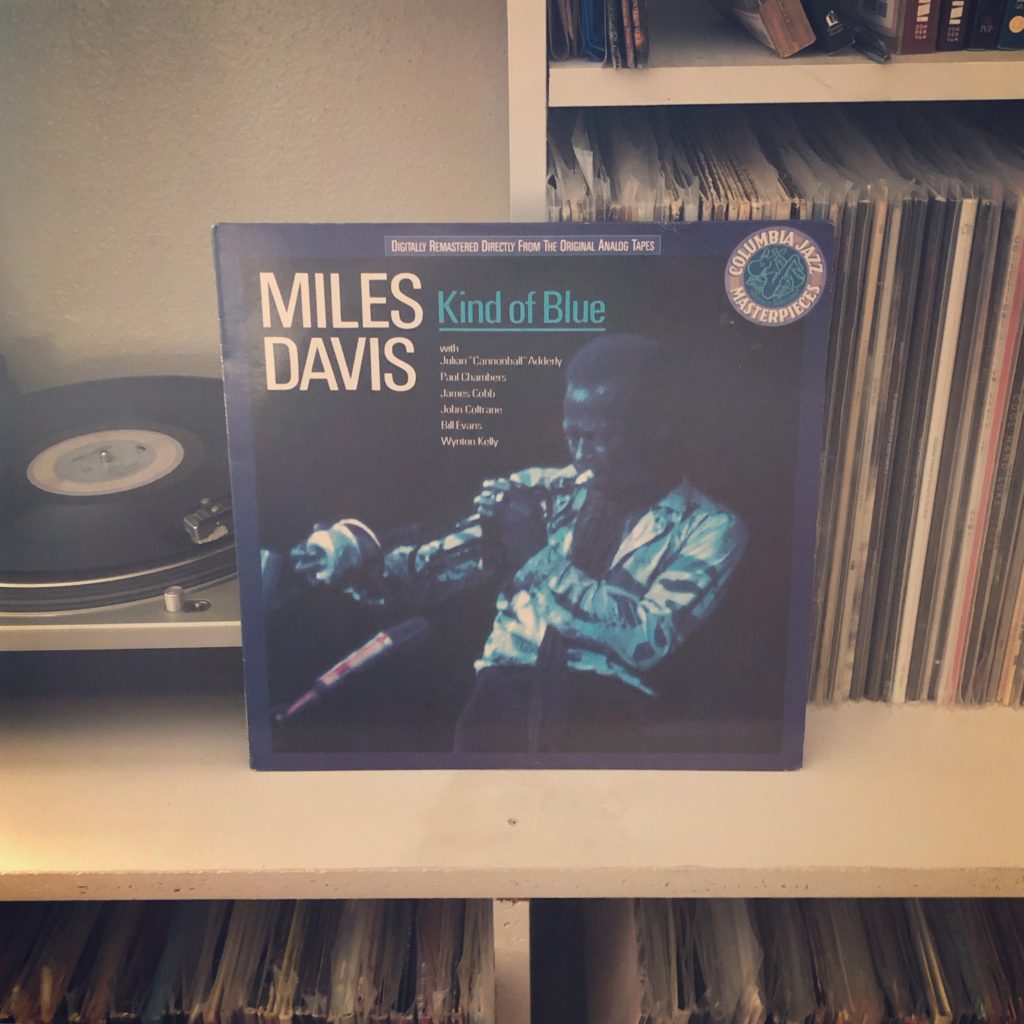
Miles Davis once said that you could sum up all of jazz history in four words: “Louis Armstrong, Charlie Parker.” And as elegantly concise as that history may be, it ignores the “Prince of Darkness” himself.
No individual left a larger footprint on jazz—or perhaps music history overall—than Miles Davis. And Kind of Blue, his most popular record—and most popular jazz record ever—demonstrates his mastery as a composer and a bandleader.
But let’s dip back into jazz history for a while. Because while Davis’ definition was a bit simplistic, it was onto something. However, those four words omit just how much jazz was shaped by the recreational substances of choice. In Satchmo’s day, swing musicians were all swaggered out on bootlegged booze. The players got lazy, syncopating and adding vibrato with almost careless abandon—see: swing. Charlie “Bird” Parker cut his teeth in the swing scene, and then switched to heroin. The drug lit his playing on fire, and his manic, rapidfire playing paved the way for what became known as bebop.
Miles first gained notoriety in Bird’s ensemble, with the same drug of choice as his bandleader. But when Parker overdosed, it was a massive wake up call. He took a bus out to his father’s farm (himself a classical trumpeter, which is why Miles lacked the vibrato of so many other jazz trumpeters) to get himself clean. Free of the white lady, it was audible in his work. While he once bebopped as frantically as the rest of them, he began to slow down. He got bored of bebop’s manic noodling and started to explore other methodologies (and probably started smoking weed, but that’s not as well documented).
With a quintet composed of all-stars like Cannonball Adderly, Paul Chambers, and the great John Coltrane, Miles began experimenting with a compositional technique known as “modal jazz.” Where bebop was noted for its quick-paced chord changes, modal jazz would on a single “mode” (sort of like a key) for several measures at a time. Tempos slowed down, solos laid back. Nothing was hurried or urgent.
The result was revolutionary, and signaled probably the single largest shift in jazz music’s trajectory. Milestones is considered to be Davis’ first major work in modal jazz, but Kind of Blue became a watershed moment. And while 1959 was already an incredible year for jazz, with such great records as Brubeck’s Time Out and Ornette Coleman’s The Shape of Jazz to Come, Kind of Blue is the most important and popular by a landslide.
Of the five cuts on this record, three of them are still standards. “So What” is maybe the best-known jazz track of all time. “Freddie Freeloader” is still a staple of jazz combos. “All Blues” lasts eleven and a half minutes without a wasted second.
Every note of this record is perfect. Every solo is immaculately played. The rhythm section holds the horns tight to the ground—there are no fills or flourishes where playing it straight might serve the song better. No member of the sextet tries to crowd out the others to show off their chops. That’s not the point. No, the point is to embrace the cool—a sort of zen state where flash and flourish are just dead weight.
Kind of Blue is an entirely transcendent record. It was the first jazz CD I owned, back when I was listening to almost nothing but emo and hardcore. Even among non-jazz-fan record collectors, this is considered an essential piece of any collection (along with A Love Supreme). It’s been certified quadruple platinum by the RIAA, which is absolutely unheard of for a jazz record. And while record sales don’t always mean an album is great, in this case, it’s dead on.